The Secret To Effective In-School Tutoring: The Quality And Training Of Your Tutors
In this article, we’re going to show you the 10 most important lessons we’ve learned about the best tutor training principles for one-to-one math teaching.
These lessons have been refined over 10 years of recruiting and training math tutors, and providing online tutoring to over 140,000 students across 3,500+ schools. Even now, we continue to refine and improve our processes to ensure we can support these students effectively.
The option of bringing in a tutor or purchasing a tutoring program is currently more popular than ever, but it’s not a decision to be taken lightly. You need to be confident in the quality of the training each tutor has received, and that they’re effectively equipped to support your students as best as possible.
Let’s get started by considering the kind of math dialogue happening in schools every week between students and Third Space Learning tutors. These types of conversations are what our online tutoring programs, and tutor training, are all about; they can help elicit thinking and build confidence in the one-on-one learning environment.
Tutor: So what does the question show, Jessie?
Student: It shows a group of counters and asks for the ratio of red to blue and the fraction of red counters.
Tutor: And what do you know about ratios?
The tutor uses open questions to uncover prior knowledge.
Student: It is when you compare the size of two groups. There are three red counters and four blue counters, so the ratio of red to blue is three to four and the fraction of red counters is three quarters.
Tutor: Really good effort in trying the question in one go. You are right. The ratio of red to blue is three to four. Let’s just look at the fraction again. What does the denominator tell us?
Student: How many parts there are in total.
Tutor: And how many parts are there?
The tutor uses more closed, scaffolded questioning.
Student: Seven… oh, so the denominator is seven.
Tutor: And how many of them are red?
Student: Three… so three of the seven parts are red, so the fraction is three out of seven or three sevenths.
The tutor can rephrase and explain if the student is unsure.
Tutor: Excellent, Jessie. So what fraction of the parts are blue?
The tutor can check understanding with post-assessment questions.
Student: Four out of seven or four sevenths!
Tutor: Fantastic, Jessie. Are you feeling confident now? Let’s check with some more questions!
High Impact Tutoring Guide for Schools
An in-depth review of the most popular tutoring approaches to help you choose the most effective one for your school
Download Free Now!Third Space Learning’s 10 lessons for effective tutor training
Lesson 1: Make sure you have a well-structured initial tutor training program
For us, it’s our Global Tutoring Program (GTP). The GTP is a bespoke tutor training program completed and passed by all Third Space Learning tutors. It’s been designed by our team of experienced former teachers in partnership with researchers at the University College London’s Institute of Education.
Our tutors are based in India and Sri Lanka, where there is a huge population of passionate, English speaking graduates and undergraduates who love math. This is a central part of our commitment to providing affordable, accessible, and high-quality math tutoring to schools.
After the application and selection process (see Lesson 2), hired tutors are enrolled in the GTP, which takes three weeks to complete. Our training program consists of a number of purpose-built courses, such as:
- Understanding the curriculum and how students are assessed
- Delivering student-centered learning
- Building rapport and personalizing lessons to age and ability
- Using effective assessment for learning techniques
- Identifying and addressing misconceptions
- Fostering a growth mindset and promoting student voice, autonomy and reflection
- Dealing with disengaged students
- Using lesson content to adapt pace
- Supporting students with math anxiety
- Successfully evaluating sessions
- Understanding safeguarding policies and promoting student wellbeing
The GTP ends with a test lesson with one of our Academic Coaches and final assessments on subject knowledge, student-centered teaching and familiarity with processes. Only once tutors have successfully completed and passed the entire program can they begin delivering one-on-one sessions to students.
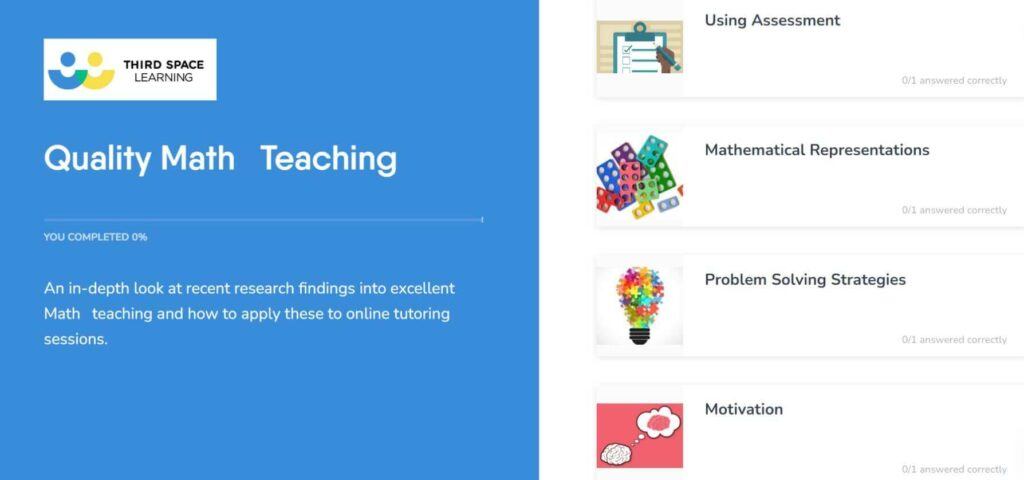
Why do teachers trust our tutor training program?
We asked Graeme Criddle, Third Space Learning’s Head of Training and Development, to tell us why any school leader should be confident in the effectiveness of the Global Tutoring Program, and Third Space Learning’s tailored interventions.
With over ten years of experience teaching math, and now extensive experience working directly with our tutor community, Graeme knows what works – and what doesn’t work – when it comes to tutor training.
“It’s the sheer breadth of courses included. It’s so comprehensive. The tutors learn a great deal, but it’s very specific and very practical; it’s not just passive learning, they’re actively involved and have to apply their learning every step of the way.”
He also went on to discuss the different types of training involved, from lesson recordings and simulations, to videos and Q&A sessions. This suite of resources helps to ensure tutors have all the strategies and skills they need to provide the best possible teaching.
“This kind of practical training is particularly useful for teaching math, as it teaches tutors to respond to a student and diagnose individual gaps and misconceptions during the lessons themselves.”
When it comes to tutor training, Graeme believes in nurturing and developing the mindset and motivation of the tutor, not just their academic or teaching ability.
“Our tutors really value the opportunity to learn these skills. They’re hugely motivated to do well and teach well, and have a positive impact on the kids they’re teaching. It’s wonderful to see.”
If you’re looking to make tutoring work in your school, we recommend a well-structured training program that establishes an inherent level of quality across all tutors.
Lesson 2: Recruiting the right tutors is key – don’t compromise on the application process
Effective tutor training ultimately stems from effective tutor selection. With so many schools trusting our tutors to support their students every week, we need to be sure that only the best tutors are enrolled in the GTP.
This means implementing a rigorous selection process to find the highest-quality candidates, not only in terms of mathematical ability, but teaching ability, too.
All tutors are required to be a graduate or undergraduate to apply for a Third Space Learning role. 89% of our tutors are studying for or have completed STEM or math-related degrees, and the remaining 11% hold or are studying for degrees in other related specialties, such as teaching.
All tutors must complete and pass an initial online application followed by math and English assessments in order to be taken forward to the next stage.
Once we’re confident in their subject knowledge, we move on to assessing how well they can teach, how effectively they deliver lesson content, and how well they can engage students.
This is conducted through two teaching interviews, which also assess linguistic ability, character and enthusiasm. From here, roughly 2% of applicants are taken through to the training program.
At the end of the initial training program, tutors are assessed for competency through a Final Practice Assessment and Final Theory Assessment.
The aim of the GTP is to provide tutors with a necessary understanding of the core tutoring principles at Third Space Learning:
- Adaptive assessment and instruction
- Engaging interaction
- Growth mindset
- Conceptual understanding
- Linguistic and mathematical accuracy
The GTP also aims to engage trainee tutors, motivating them to learn new skills and ensure they feel confident and excited to start tutoring.
If you’re thinking of implementing one-to-one teaching or tutoring in your own school, it’s important to look beyond subject knowledge when choosing a tutor or tutoring provider.
Just because a tutor is excellent at math, doesn’t mean they’ll be excellent at engaging students in the subject, or teaching it in a way that your students respond to.
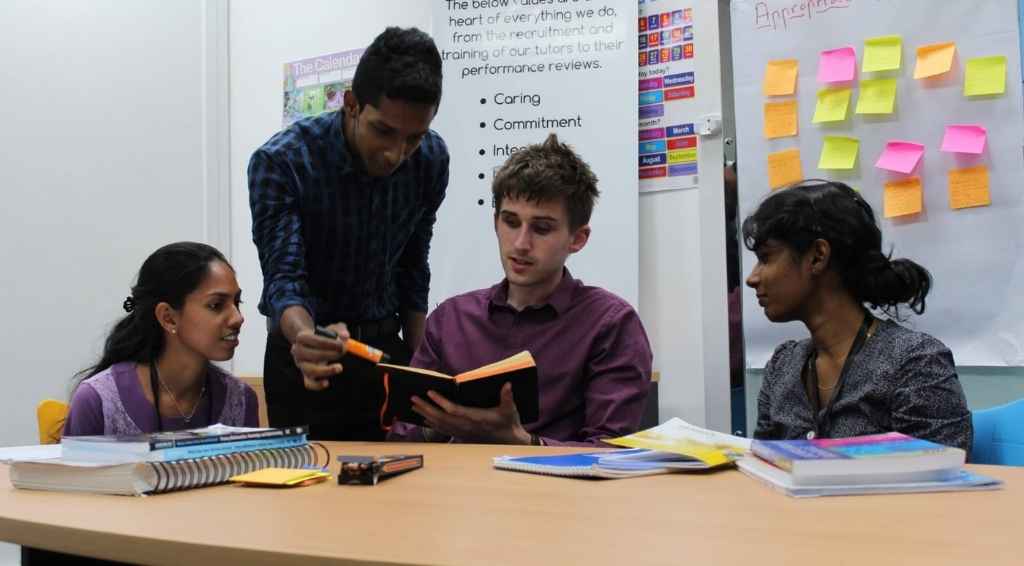
Lesson 3: Tutors need to know inside out the curriculum and syllabus that students are following
The GTP is founded on up-to-date resources and research, underpinned by an understanding of Common Core Standards. Tutors will also learn about the standards followed in states that do not follow Common Core, such as the Texas Essential Knowledge and Skills (TEKS).
Our tutors begin the program with extensive training on the US curriculum. This includes an in-depth study of US terminology and language, thus equipping tutors to develop each student’s skills in line with the five domains that the standards fall under for each grade level.
(Note: Domains are larger groups of related standards. Standards from different domains may sometimes be closely related.)
The five domains are:
- Operations and Algebraic Thinking
- Number and Operations in Base Ten
- Number and Operations – Fractions
- Measurement and Data
- Geometry
At Third Space Learning, part of what we do is about helping students prepare for state assessments, so our tutors need to know the strategies and methods required for assessment success in the US.
This includes how to teach problem solving effectively, breaking down exam-style questions, and the structure of the exams themselves.
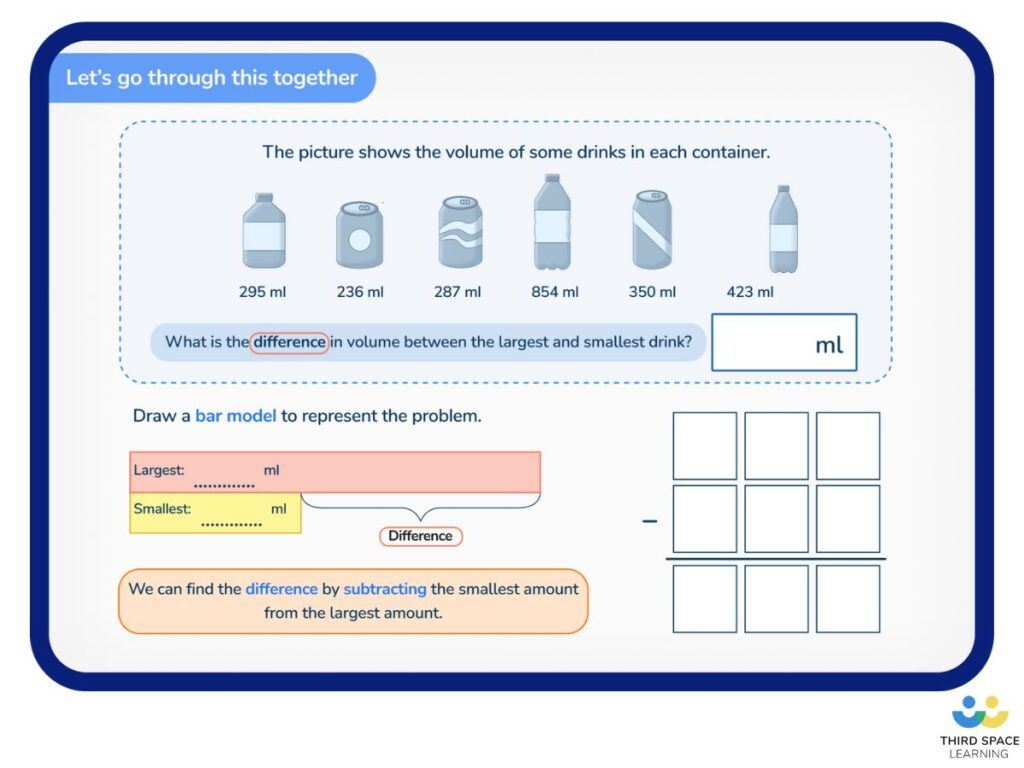
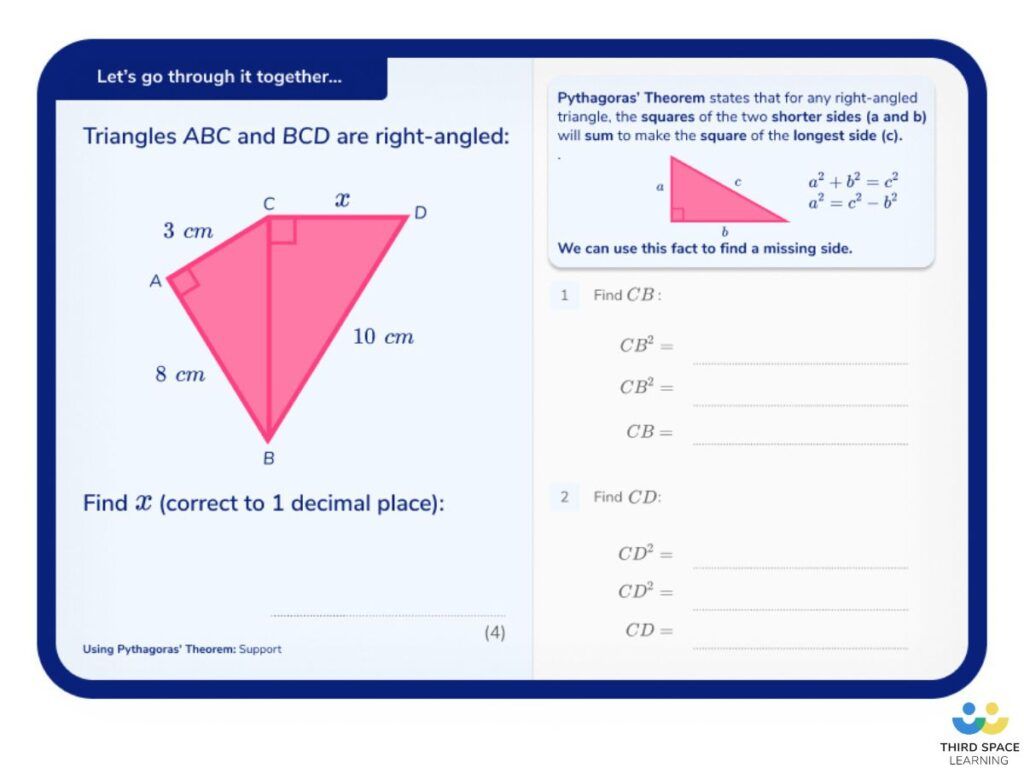
For tutoring to work in your school, the tutor(s) would need a comprehensive understanding of the curriculum, national and district-specific context and exam system. Tutoring should not be devoid of the bigger picture or educational context in which the student inevitably exists.
Lesson 4: Every student’s context and gaps are different – and tutors must be trained to adapt accordingly
Schools choose one-to-one teaching for their students because of its ability to provide personalized support to individuals. This means not only personalizing the lesson content to suit, but also being empathetic to each student’s educational context.
What sort of level are they working at? What exams will they be taking? What topics do they struggle with, or what misconceptions do they have?
As well as understanding where a student is at in their school journey, tutors also need to gauge each student’s individual gaps and misconceptions to personalize the delivery of every lesson.
During their training, tutors learn why adapting the pitch and pace of their lesson is so important, and how to do this effectively to ensure their student is confident with each concept before moving on to the next.
Tutors are also trained in assessing knowledge, creating meaning and evaluating progress in different parts of the lesson, as well as how personalization strategies might differ for older and younger students.
Past session recordings help tutors identify where tutors have successfully personalized their lessons, including adapting to specific needs or when students are feeling less engaged.
“The children have loved the personalized learning and having a one-to-one with their tutor. It has been lovely to hear them explain their thinking.”
– Karan Johnson, Moss Hall Junior School
If you’re considering using external tutors in your school, these tutors must be attuned to the individual needs and gaps of individual students to deliver a unique learning experience.
Lesson 5: Empathy and rapport – put yourself in their shoes
In our experience, putting the tutor in the student’s shoes is one of the best starting points for developing effective one-to-one tutors. If the tutor doesn’t understand what it’s like to learn in this way, how can they expect to teach effectively?
Once our tutors have mastered what it’s like to be a student, they are ready to start experimenting with our platform and begin their practice sessions. Initially, tutors will take on the role of the student, with one of our experienced assessors playing the tutor and demonstrating best practice.
Only when they’ve truly understood what it’s like to learn in the Third Space Learning classroom do they move on to assuming the role of the tutor.
In fact, every single new starter at Third Space Learning – from the Customer Support Team to the Product Development Team – takes on the role of the student and receives a one-to-one lesson in their first week of the job.
This immersive experience helps everyone to understand the needs of the students we’re all working every day to support.
For tutoring to work in context at your school, the inextricably human element of these interactions must not be underestimated, even in online sessions.
Lesson 6: If the student’s not actively involved, it’s not going to work; it’s on the tutor to encourage true engagement
At Third Space Learning, we believe in student-centered teaching. The best way to boost progress and build confidence in one-to-one math lessons is to actively involve students in their own learning. Much like tutor training, this shouldn’t be a passive experience.
By training tutors to encourage students to take the lead in their learning journey, discuss the methods they’re using and verbalize their approach, we’re putting the student at the heart of the lesson and providing as many learning opportunities as possible.
“The fact that children have to speak with their tutor and explain their reasoning develops confidence and their use of mathematical vocabulary.”
– Karyn Astle, Deputy Headteacher, Buckingham Park Primary School
For active student-centered teaching to be effective, the student has to be engaged throughout their lessons.
That’s why our training program focuses on building rapport with students and engagement strategies, such as starting off on a positive note, making the student feel valued, using the appropriate tone and register, giving praise, and encouraging the student to take on the role of the tutor; explaining something often consolidates our understanding of it.
Helping students develop a growth mindset is also particularly important. Tutors are trained in different approaches for students with different mindsets, how to give praise in a way that supports a growth mindset and how the tutors themselves can practice adopting a growth mindset inside and outside of their sessions.
If your school is looking to bring in tutors or employ a tutoring provider, you may find more success if you focus on tutors who have been trained to put the student in the driving seat, rather than simply being a passenger along for the ride.
Lesson 7: Formative assessment is still a key part of dialogue in a successful lesson
Formative assessment, also known as Assessment for Learning (AfL), is central to any Third Space Learning intervention program and, as such, tutors need to be effectively trained in using these techniques to get the most out of the students they’re teaching.
Definition of formative assessment
“Formative assessment is any assessment task designed to promote students’ learning. These tasks give both teachers and students feedback, so that teaching and learning activities can be altered according to the results. Formative assessment is different from summative assessment, the goal of which is to measure mastery.” – National Council of Teachers of Mathematics (NCTM)
Before they begin learning with their dedicated tutor, each student sits an initial diagnostic assessment to help us understand their individual gaps and inform their personalized learning journey. At the end of each lesson, students are asked a few short questions to reinforce what they’ve learned, and assist us in continuously recalculating their journey.
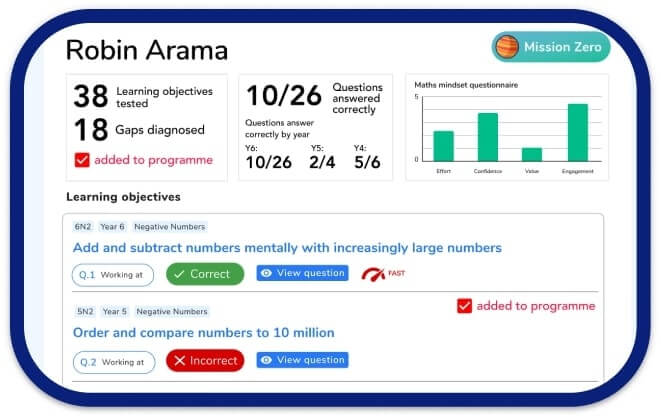
The assessment course in the GTP furnishes tutors with the strategies they need to assess and adapt within the lessons themselves.
This includes understanding how students are assessed before, during and after the program, identifying good assessment techniques to diagnose learning gaps and misconceptions in real time, and exploring effective (and ineffective) questioning strategies.
To reinforce this, tutors also watch clips of sessions to ‘see it in action’ and discuss when it’s been successful or where they feel it could be improved.
“It has really made a difference to our students. The assessment of their level of understanding which is then built upon with lots of positive reinforcement is very successful. It’s time very well spent.”
– Alison Tanner, math Leader, Cameley CofE VC Primary School
When considering tutoring in your own school, it’s important to make sure the lessons are informed by regular assessment, and that any tutor or teacher training equips tutors to ask the right questions of their students.
Lesson 8: Training is an ongoing process: instill a culture of continuous professional development
It’s no good investing all that time into a really engaging and effective tutor training program, only to stop once the tutor has begun delivering sessions. Just as teachers don’t stop learning once they begin teaching, tutors must receive ongoing training and development to ensure their lessons continue to be as effective as possible.
Our tutors are invited to biweekly Professional Development sessions which include videos, example sessions and personal assessments. This is compulsory for new tutors for the first six weeks.
There are also biweekly assignments in which tutors are encouraged to identify good and bad tutoring practices from real-world examples. All tutors are assessed at least every semester, with new tutors undertaking assessments more regularly.
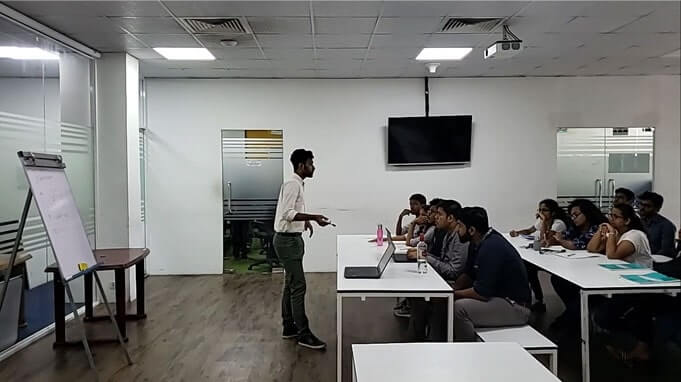
Because all Third Space Learning sessions are recorded for training and safeguarding purposes, tutors regularly review and evaluate past sessions to identify where they might be able to improve, or which strategies are working best.
They can also share these experiences with other tutors to develop their learning as part of a wider tutor community.
Academic Coaches pick and evaluate sessions at random throughout the semester and provide written feedback to the tutor. Coaches also provide one-to-one and small group sessions with their team, and are given the flexibility to customize the training to their needs.
As part of this process, if a senior member of the tutoring team notices that a tutor might need a little more support to help them deliver the most effective sessions, they will receive a personalized support plan to assist their development and improvement.
“The personal and professional support given at Third Space Global is tremendous.”
– Hanan Ameen, Third Space Learning Tutor
As well as helping our tutors to continuously develop and improve, ongoing training also helps to motivate tutors and provide a clear progression pathway. Tutors know that they will continue to learn and, as they do so, can move on to more experienced tutor positions, such as leading their own team of tutors or coaching others.
Many of our tutors also progress into our global tutor management team. This motivation and ambition is a fundamental part of what makes our tutoring program so successful and effective; they’re not ‘just a tutor’, they’re part of a community where they are encouraged to thrive and support one another.
When thinking about tutoring in the context of your school, remember that the tutor should never be seen as the finished article. Every lesson offers an opportunity for development and new perspectives to be realized, both for the student and the tutor.
Lesson 9: A training program is never ‘finished’; keep reviewing and adapting it
Just as training shouldn’t end once tutors begin delivering sessions, the development of the tutor training program shouldn’t end once tutors begin training! The program must be subject to a regular and thorough review to confirm that it’s still meeting the needs of the tutors and, of course, the students they’re teaching every week.
Our Academic Team reviews the GTP every year, ensuring it remains as relevant, robust and engaging as possible. This involves analyzing all the data and feedback we collect from our schools, students and tutors, and making any necessary changes to the training program and to the intervention program itself.
As with teachers, the Coronavirus pandemic had a huge impact on the everyday lives of our tutors. Unable to go into the physical Tutor Centers for their training sessions, the tutor training program had to undergo a radical transformation.
At first, all sessions were translated into an online format, but with little change to the content itself. However, as time went on, online training sessions were adapted and improved to bring in more interactivity and an enhanced trainee experience.
For any tutors working with your students, it’s important to make sure the training they receive – both the content and the method of delivery – is reviewed regularly and updated accordingly.
Lesson 10: Your first responsibility is the safety of any student in the session
As well as receiving training on delivering effective math lessons and all the techniques and strategies involved, our tutors also receive extensive safeguarding training and advice on supporting student wellbeing to ensure student safety remains a priority throughout.
Safeguarding training is refreshed every year and it covers how to understand the signs of abuse and neglect, how to respond to concerns appropriately, and the correct procedures for reporting concerns or incidents arising during sessions. Where possible, this training uses real-life anonymized examples from various situations.
Inviting an external tutor or tutors into your school to support a group of your students is not a decision to be taken lightly. You need to be sure that your students feel safe and comfortable, and that all the necessary safeguarding procedures are in place.
A comprehensive, practical and long-term approach to tutor training
As we’ve seen, there are lots of ingredients that go into developing an effective tutor training program, and it goes far beyond simply creating a few courses.
It’s essential that any tutor who will be working with your students has sufficient training on the content and curriculum in place, examines the techniques and strategies available to get the most out of students, and receives regular and ongoing training throughout their career.
We believe that these 10 lessons will dramatically alter the quality of tutoring your students receive, and the outcomes your tutors achieve.
Read more: 9 Tutoring strategies to boost learning
Do you have students who need extra support in math?
Give your students more opportunities to consolidate learning and practice skills through personalized math tutoring with their own dedicated online math tutor.
Each student receives differentiated instruction designed to close their individual learning gaps, and scaffolded learning ensures every student learns at the right pace. Lessons are aligned with your state’s standards and assessments, plus you’ll receive regular reports every step of the way.
Personalized one-on-one math tutoring programs are available for:
– 2nd grade tutoring
– 3rd grade tutoring
– 4th grade tutoring
– 5th grade tutoring
– 6th grade tutoring
– 7th grade tutoring
– 8th grade tutoring
Why not learn more about how it works?
The content in this article was originally written by a member of the content team Lottie Bates and has since been revised and adapted for US schools by elementary math teacher Katie Keeton.





